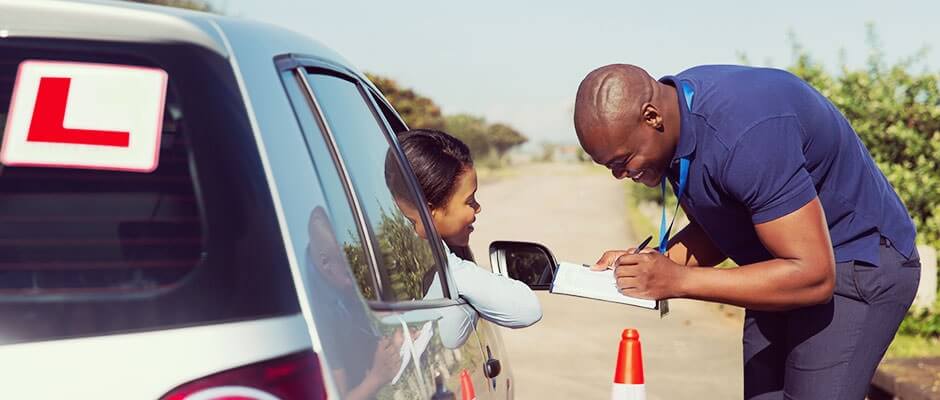You’ve passed your theory test. You’ve had plenty of driving lessons. You’re finally ready to take the practical driving test. Here’s what you need to know:
Where can I take my test?
It is likely that you will have a number of test centres near to where you live and you will practice near to the centre that your instructor chooses.
You can book your test online at https://www.gov.uk/book-driving-test
How much will it cost?
The practical test will cost:¹
- £62 on weekdays
- £75 for evenings, weekends and bank holidays
(Correct in October 2014 – may be subject to change)
[symple_box color=”gray” fade_in=”false” float=”center” text_align=”left” width=””]
Remember:
Make sure you book your test using the official website. Unofficial “copycat” websites might charge you more for booking on your behalf.
[/symple_box]
What do I need to bring?
You must bring your theory test pass certificate or confirmation and both parts of your driving licence – the photocard and the paper counterpart. Click here if you’ve lost them.
[symple_toggle title=”Did you know:” state=”closed”] If don’t bring the right documents, your test will be cancelled and you will still have to pay for it.[/symple_toggle]
Can I use my own car?
Most instructors would advise you to use their car but if you would prefer, you can use your own. However there are quite a few conditions your car must meet in order for you to be able to use it for the test. Find them here.

What will I have to do?
Your practical test will consist of four sections:
- Eyesight test
- Show me tell me questions
- Your general driving ability
- Independent driving section
1. The eyesight test
The first thing you will be asked to do is correctly read the number plate of a parked vehicle from 20 or 20.5 metres away (depending on the style of the number plate).
2. “Show me, tell me” questions
You will then be asked one “show me” question and one “tell me” question. A “show me” question means demonstrating how you’d do a car safety check; a “tell me” question means explaining how you’d carry one out.²
You can find a list of all the possible questions here.
3. Your general driving ability
The main part of the test takes about 40 minutes.
The examiner will be judging whether you have achieved a safe driving standard overall. You may also be required to do:
- an angle start (pulling out from behind a parked vehicle)
- a hill start
- normal stops
- an emergency stop
You will also be required to perform one reversing manoeuvre, which could be:
- reverse around a corner
- turn in the road
- reverse parking – either parallel parking or into a parking bay
4. Independent driving
For approximately 10 minutes the examiner will give you directions and in this time you must show that you can follow instructions and make decisions independently and safely.
[symple_toggle title=”Did you know:” state=”closed”] It’s OK if you forget an instruction, but you need to decide when it’s safe and appropriate to ask for confirmation. If you ask the examiner to remind you of the instructions he or she will do so.[/symple_toggle]

More information
Do the test centres have a quota for how many people they pass and fail?
No, this is a myth! There are no pass or fail quotas.³
What do I need to do to pass?
You need to get 15 or fewer minor driving faults, and no serious or dangerous faults.
When will I get my results?
Once you have completed the test, the examiner will tell you if you passed or failed. You can have your instructor with you if you would like.
When can I drive on my own?
If you passed, you can drive on your own straight away – providing you have the necessary insurance, and the car is taxed with a valid MOT.
If you failed the driving test you cannot take another test until 10 working days have passed.⁴
I’ve passed! Does that mean I’m a perfect driver?
No! Passing the test means you’ve been deemed safe enough to drive alone, but there’s no way you can have covered all driving scenarios and potential hazards.
In your first year of driving alone we would recommend you avoid anything that might distract you from the road, such as loud music or disruptive passengers, and try and plan your route in advance so you don’t need to rely on maps or sat navs. Don’t let anyone pressure you into driving dangerously, whether it’s your passengers or other motorists.
How can I help improve my confidence on the road?
After you’ve passed your test, you can take the Pass Plus course or the Institute of Advanced Motorists’ advanced driving course. These courses can help you gain experience in driving scenarios that you may not have covered in your standard driving lessons, such as driving in poor weather conditions and driving on the motorway.
Visit our guide to Pass Plus for more information on the Pass Plus course.
If taking an advanced driving course is not an option for you, you may want to ask your driving instructor to just give you an additional motorway lesson after you pass.
Sources:
[1] https://www.gov.uk/practical-driving-test-for-cars/your-driving-test-result
[2] https://www.gov.uk/practical-driving-test-for-cars/overview
[3] https://www.gov.uk/practical-driving-test-for-cars/what-happens-during-the-testa
[4] https://www.gov.uk/driving-test-cost.
